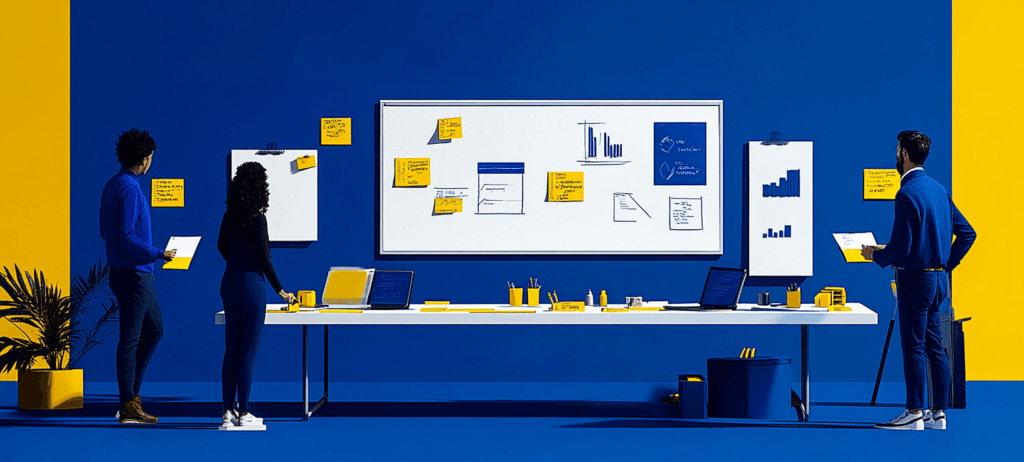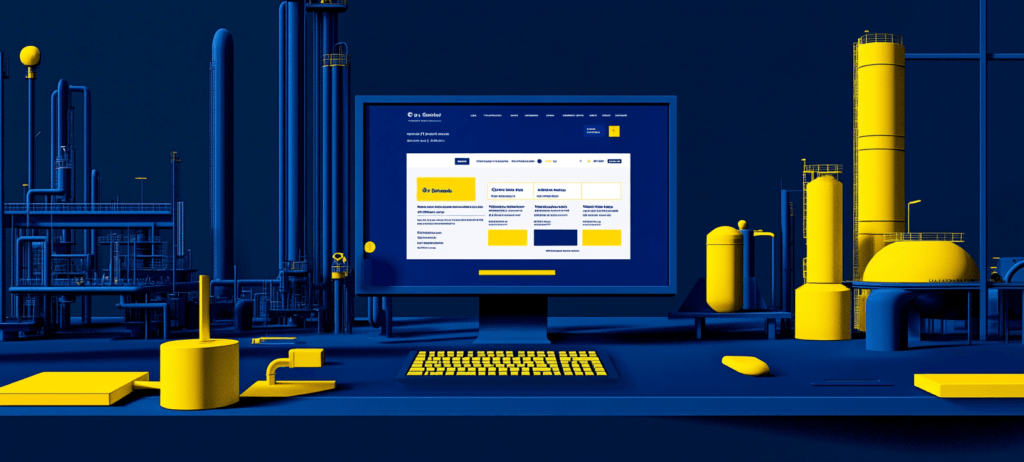-
 Published: Jul 4, 2023
Published: Jul 4, 2023
-
 11 min. read
11 min. read
-
 Maria Carpena
Maria Carpena Emerging Trends & Research Writer
Emerging Trends & Research Writer
- Maria is an experienced marketing professional in both B2C and B2B spaces. She’s earned certifications in inbound marketing, content marketing, Google Analytics, and PR. Her favorite topics include digital marketing, social media, and AI. When she’s not immersed in digital marketing and writing, she’s running, swimming, biking, or playing with her dogs.
Behavioral segmentation definition: Behavioral segmentation is the process of segregating your customers or prospects based on their behavior patterns when interacting with your business, app, or website.
Segmenting your customers and prospects plays an important role in creating effective marketing strategies. When you segregate them according to how they interact with your business and their purchase behaviors, you can craft different marketing messages and campaigns tailored to their needs.
As a result, you can effectively convert prospects and retain existing customers. This segregation strategy is called behavioral segmentation.
If you’d like to learn more about how to use this segmentation strategy, you’re in the right place. This blog post will discuss these topics:
- What is behavioral segmentation?
- What are the benefits of behavioral segmentation?
- 5 types of behavioral segmentation
- 5 behavioral segmentation examples
- 3 ways to use behavioral segmentation
Want to stay updated on the latest marketing strategies? Subscribe to our weekly newsletter!
Don’t miss our Marketing Manager Insider emails!
Join 200K smart marketers for the hottest marketing news and insights in your inbox.
Inline Subscription Form
“*” indicates required fields


What is behavioral segmentation?
Behavioral segmentation is the process of segregating your customers or prospects based on their behavior patterns when interacting with your business, app, or website.
You can categorize your customers or prospects according to:
- The products or services they purchased
- How long they’ve been a customer
- How they use your product or service
- Their attitude toward your brand and offerings
- Their purchasing behavior
Behavioral segmentation is one of the seven common types of market segmentation.
What are the benefits of behavioral segmentation?
Behavioral segmentation in marketing highlights what draws your prospects to your products or services. In addition, it gives you insights into how your customers use your offerings and their engagement with your brand.
Here are five benefits of behavioral segmentation in marketing:
- Distinguish your engaged prospects from the uninterested ones: Behavioral segmentation helps you identify your engaged audience to prioritize these prospects. For example, by knowing which newsletter subscribers are opening your emails, you know who is interested in your business and close to purchasing from you.
- Improve marketing messages: You can fine-tune your marketing messages to resonate with your audience with the help of behavioral segmentation. Let’s say you own a pet store and you segmented your prospects based on product interest. You can then retarget your prospects with search ads relevant to the products they want.
- Personalize customer experiences: Fun fact: 89% of marketers see a positive return on investment when they use personalization in their campaigns. By knowing more details about how your prospects and customers view your brand and the products they need from your business, you can provide a seamless and personalized experience.
- Inform your forecasting and budget allocation: Analyzing the behavioral patterns of your customer segments informs you of their purchase trends. As a result, you can forecast your sales and effectively plan your marketing budget.
- Foster loyalty among your customers: Because behavioral segmentation fosters a personalized experience for your customers and prospects, they feel appreciated and supported. You get to provide the relevant information that they need before they make a purchase. Once they’ve purchased from you, you provide the support they need and suggest other products they may need.
5 types of behavioral segmentation
There are five common types of behavioral segmentation. You can choose one or use a combination of these behavioral segmentation strategies:
Let’s go through each one:
1. Product benefits
You can segment your customers and prospects based on what they want to get out of your product or service. Start with identifying the different benefits that your product offers to different customers.
For example, let’s say you’re an automobile dealer, and one of your vehicle offerings is popular because of its fuel efficiency. The same vehicle is the choice of consumers who buy it for its safety features.
2. Buyer journey stage
Another way to group your prospects is according to where they are in the buyer journey stage or how close they are to purchasing from you.
Did a particular prospect discover your business and products? You can create a group for these new prospects.
You may have a group that’s interacted with your social media pages and visited your product pages multiple times. These prospects are closer to purchasing than those who just discovered your business.
Using a customer relationship management (CRM) software like Nutshell enables you to track your prospects’ online and offline interactions with your business, so you can segment them properly.
3. Purchasing behavior
You can group your customers according to their purchase behavior. A CRM platform can also come in handy when you’re segmenting your customers according to their transaction history or purchasing behavior.
For example, let’s say you’re in the business of jewelry stores. You may have customers who regularly purchase from you whenever you have special offers. You can reach out to these customers with newsletters about your latest promos.
Another behavior you’ve probably observed is a customer who isn’t rushing to make a purchase. They are your customers who left some items in their cart. Send out cart abandonment emails to remind them about their pending purchase, just like the example below.
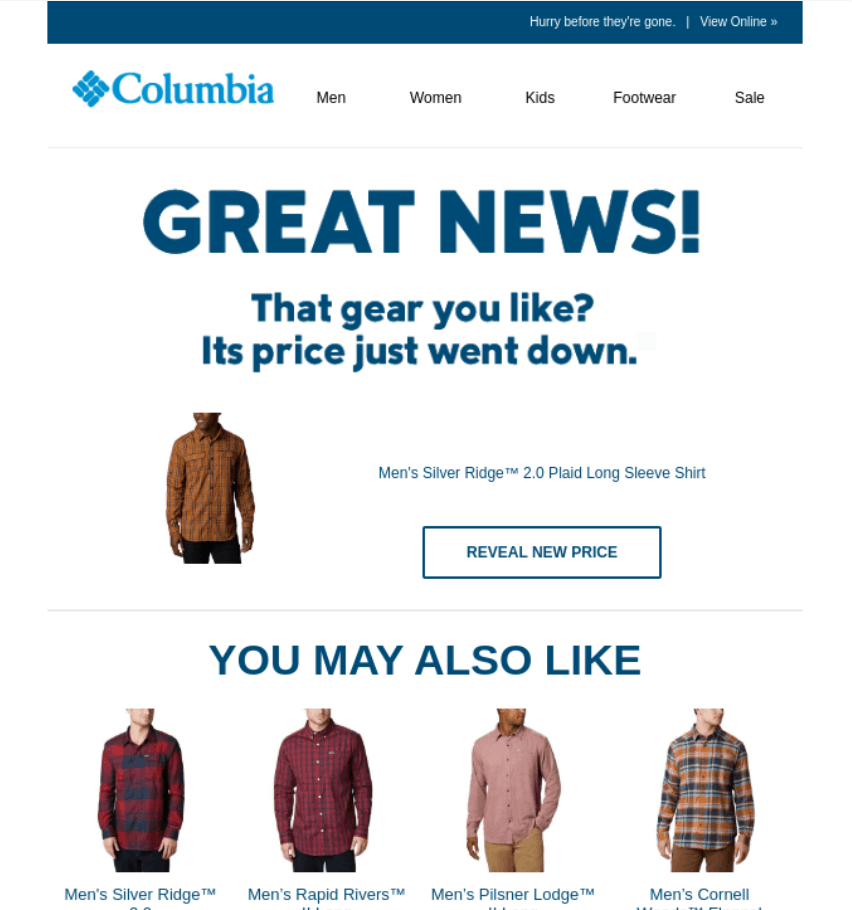
You may also have customers who purchase from you during specific holidays or on their birthdays. Consider sending them your latest promos and special offers during these holidays, so you can ease them into making a purchase from your business.
4. Customer engagement
Another segmentation method you can employ is according to how engaged a customer or prospect is. For a start, you can group them according to the following categories:
- Occasionally engaged: These customers are familiar with your brand, but they don’t always purchase from you. You can find out what’s causing them from regularly engaging with your business by sending them a quick survey with a special offer.
- Regularly engaged: These customers regularly engage with and purchase from your business. Consider nurturing your relationship with these customers with loyalty programs and offer them other products they can benefit from.
- Highly engaged: These customers are your promoters. Not only do they regularly purchase from you, but they also recommend your products or services to their family and friends. Pamper these customers by sending them well wishes on their birthdays or anniversary with your business.
5. Customer satisfaction
You can segregate your customers according to how satisfied they are as your customers. How? You can conduct a net promoter score (NPS) survey using an NPS survey tool!
An NPS survey asks your customers how likely they will recommend your business, product, or service to family, friends, or colleagues. Your NPS survey can group your customers according to:
- Promoters: These are your highly satisfied customers who even recommend your business to colleagues, friends, and family.
- Passives: These are your satisfied, but neutral customers. You can nurture customers in this segment so they can become promoters.
- Detractors: Your detractors are your dissatisfied customers. You may need to reach out to these customers to address their problems.
5 behavioral segmentation examples
Here are five behavioral segmentation examples for inspiration:
- Royal Canin (Product benefit)
- Methodical Coffee (Buyer journey stage)
- Headspace (Purchasing behavior)
- PetSmart (Customer engagement)
- Chipotle (Customer satisfaction)
Let’s go through each one:
1. Royal Canin (Product benefit)
Cat and dog food manufacturer Royal Canin ran these social media ads linking to its website:
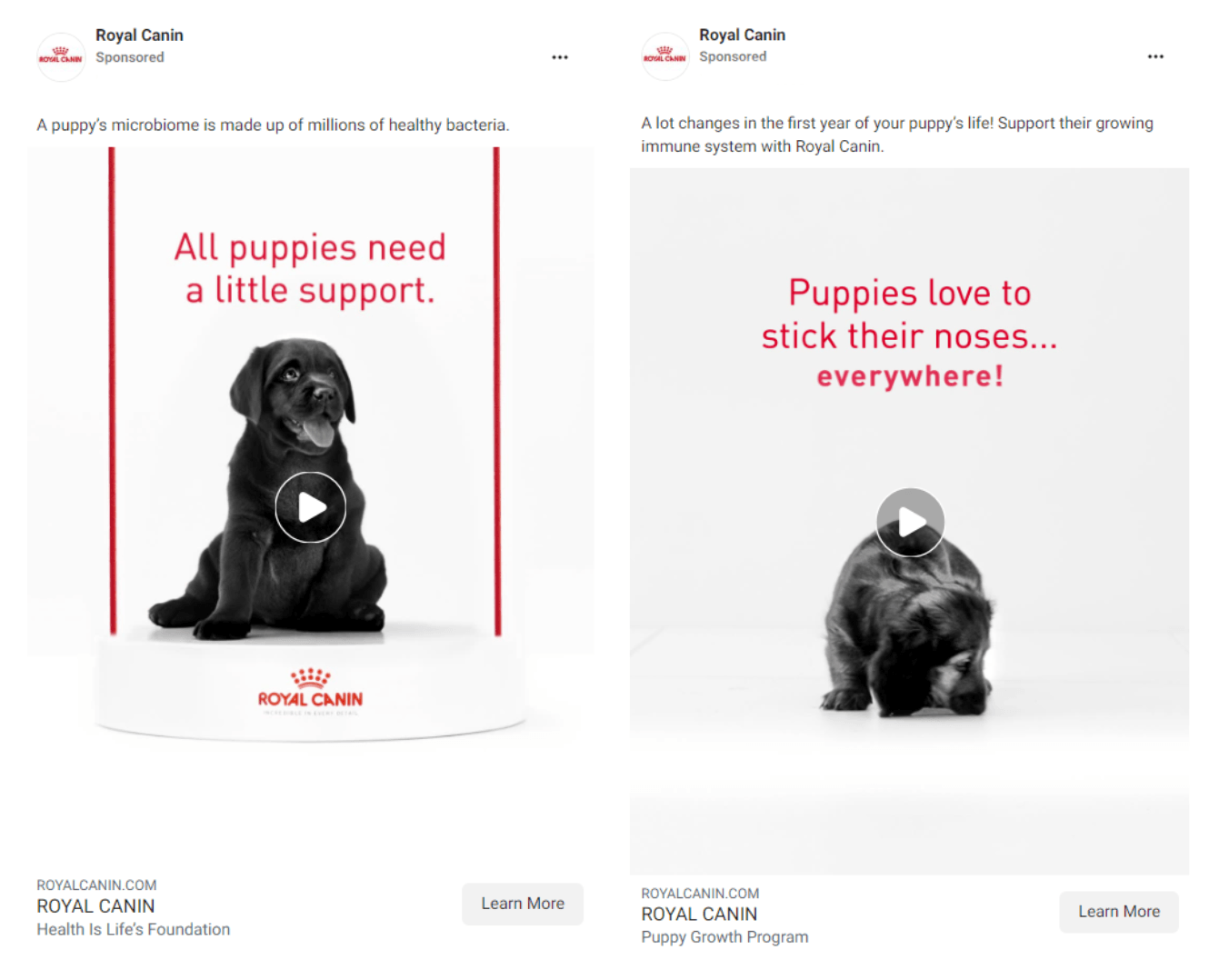
One version speaks to puppy owners who are looking for gut health support for their pets. Another ad communicates with pet owners who are looking to strengthen their dogs’ immune system.
Both ads aim to increase awareness about Royal Canin’s expertise in puppy food. However, the ads talk about the different aspects of puppy health targeting prospects who are looking for specific benefits from their pet’s food.
2. Methodical Coffee (Buyer journey stage)
Here are two email newsletter samples from Methodical Coffee:
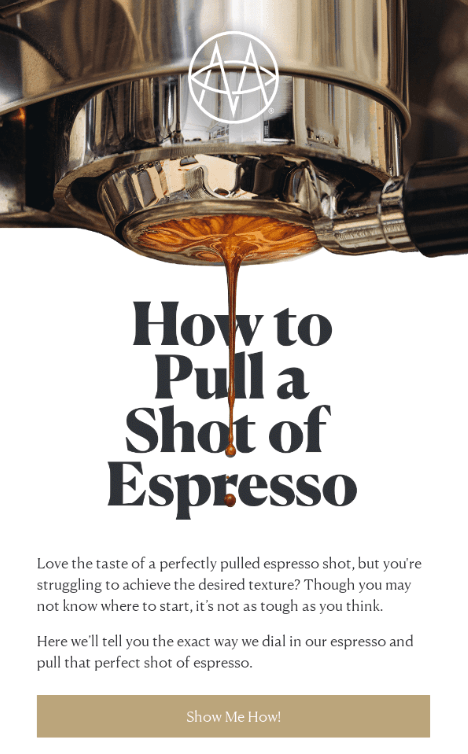
The espresso tutorial email below showcases the brand’s extensive knowledge about coffee. It is an excellent newsletter for subscribers they are nurturing to become customers.
If a subscriber previously purchased a product or checked out the product in the past, sending them the newsletter example below is a great way to interact with them:
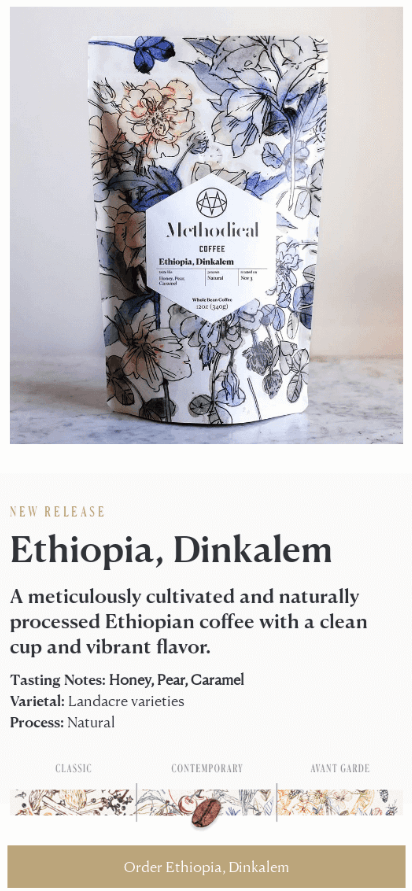
It describes the product and provides a call to action (CTA) where the subscriber can purchase.
3. Headspace (Purchasing behavior)
Segregating your customers according to their purchase behavior enables you to send them the most appropriate messages at the best time to ease conversion. In this example from Headspace, the company sent a personalized email to a user who abandoned their cart:
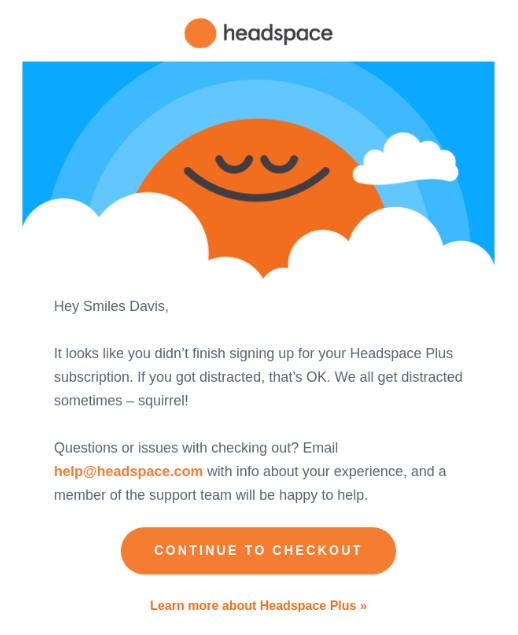
The email has a CTA leading to the user’s abandoned cart, so they can complete their purchase. Headspace also provided an email the user can reach out to if they need further support.
4. PetSmart (Customer engagement)
Do you have a highly engaged group of customers? Consider making them feel more special by giving them a special promo on their birthday or their anniversary with your business.
Here’s an example from PetSmart. The personalized email greets the user’s pet and adds a coupon:
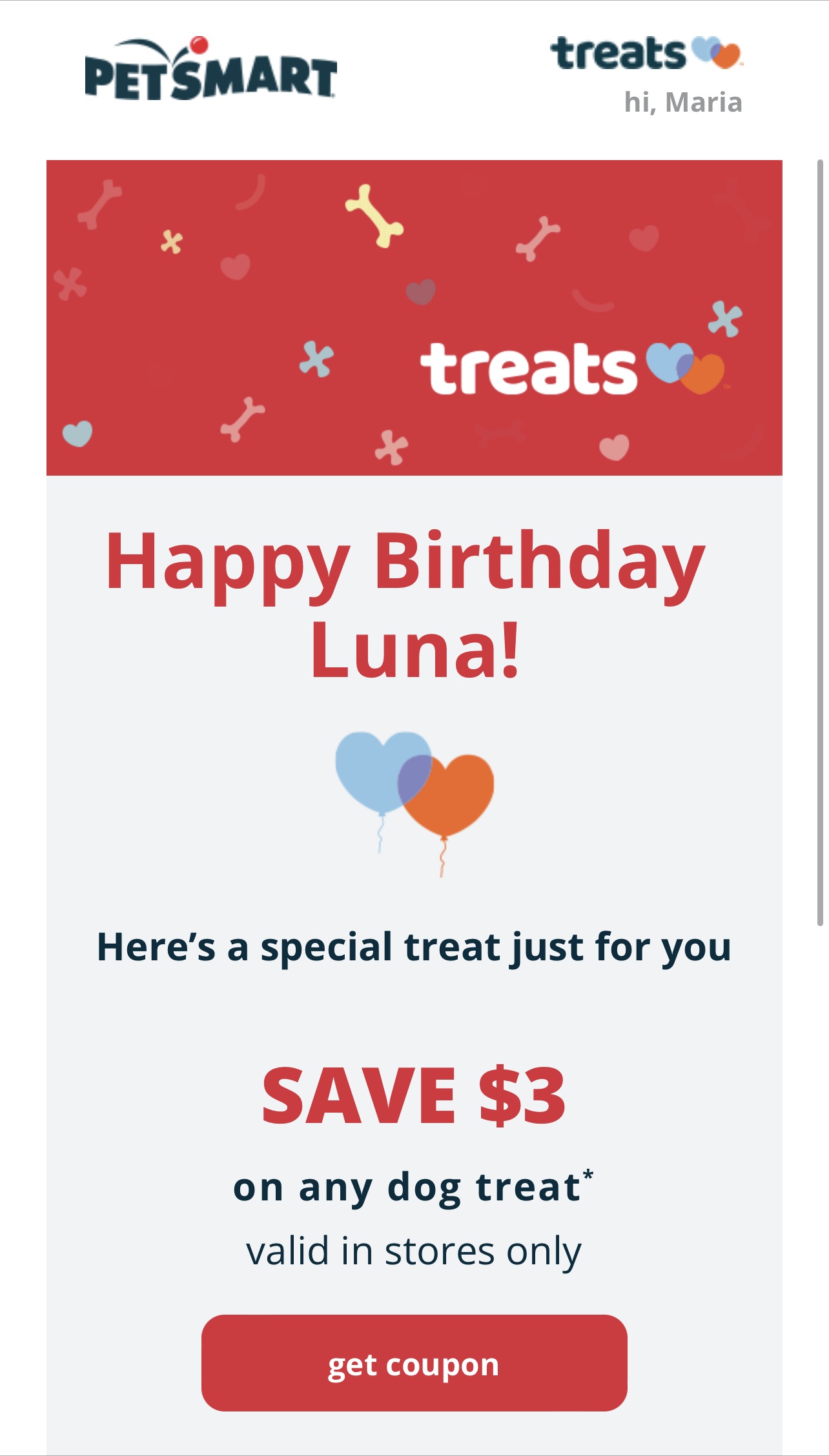
This email encourages purchases because of the special offer.
5. Chipotle (Customer satisfaction)
Aside from an NPS survey, repeat purchase indicates that a customer is satisfied with your products or services. And a great way to show your appreciation to your loyal customers is through your rewards program.
Here’s an example of a rewards program from Chipotle:
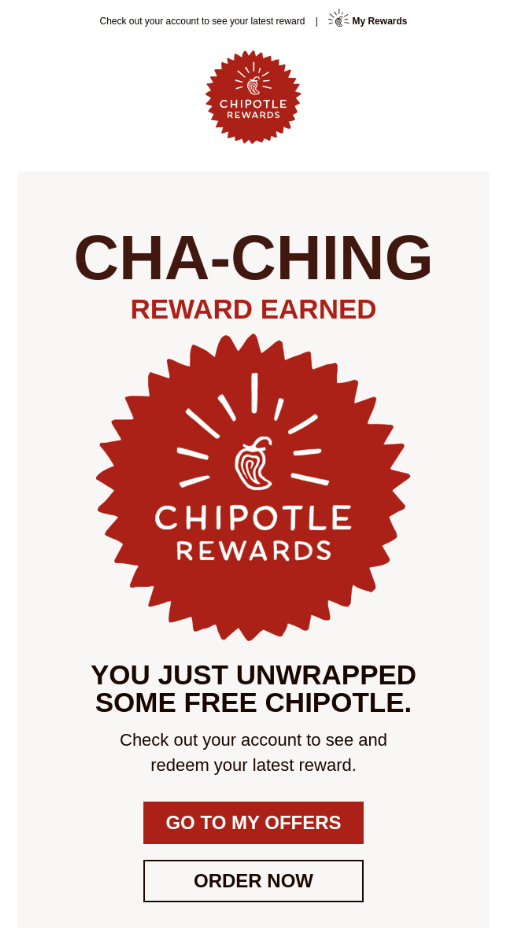
After a fixed number of purchases, Chipotle gives its customers a freebie.
3 ways to use behavioral segmentation
Behavioral segmentation enables your marketing team to execute the following strategies more effectively:
Email marketing
Give your email marketing strategy a boost with behavioral segmentation. By grouping your customers accordingly, you can send them relevant emails, offers, and messages.
You can send first-time customers a welcome or thank-you email. Did a user add an item to their cart, but skipped check out? You can send a cart-abandonment email.
If a certain group of customers is interested in one of your products, you can send them the relevant offers and updates about that product.
Social media marketing
You can use behavioral segmentation when running your social media ads. You can adapt your ads according to how your customers and prospects interact with your posts or past ads.
Did they previously engage with an ad about a particular product? Encourage interaction and conversion by serving these social media users ads about the latest promo on the product they expressed interest in.
Personalization
By taking note of your customers’ behavior toward your business or website, you can provide a personalized experience for them.
If a user has been visiting a certain product page several times over the course of a few weeks, you can personalize a non-intrusive pop-up for them. You can invite them to subscribe to your newsletter to get the latest information about the product and exclusive offers.
Meet WebFX:
Your world-class, tech-enabled marketing agency with over 1.6 million hours of combined expertise.

Carry out behavioral segmentation strategies with WebFX
Segmenting your customers and prospects according to their behavior toward your brand and products enables you to create effective marketing strategies. If you need help to get started with behavioral segmentation, you can turn to WebFX.
We’re a full-service digital marketing agency with 25+ years of experience in 200+ industries. Our team of 500+ experts is pumped to understand your business and target audience, and craft strategies that grow your bottom line.
Aside from the expertise of our team members, you get to use our proprietary growth platform, RevenueCloudFX, which houses all your customer and lead data, so you can track all their interactions with your business.
Contact us online or call us at 888-601-5359 to speak with a strategist about our digital marketing services!
-
 Maria is an experienced marketing professional in both B2C and B2B spaces. She’s earned certifications in inbound marketing, content marketing, Google Analytics, and PR. Her favorite topics include digital marketing, social media, and AI. When she’s not immersed in digital marketing and writing, she’s running, swimming, biking, or playing with her dogs.
Maria is an experienced marketing professional in both B2C and B2B spaces. She’s earned certifications in inbound marketing, content marketing, Google Analytics, and PR. Her favorite topics include digital marketing, social media, and AI. When she’s not immersed in digital marketing and writing, she’s running, swimming, biking, or playing with her dogs. -

WebFX is a full-service marketing agency with 1,100+ client reviews and a 4.9-star rating on Clutch! Find out how our expert team and revenue-accelerating tech can drive results for you! Learn more
Try our free Marketing Calculator
Craft a tailored online marketing strategy! Utilize our free Internet marketing calculator for a custom plan based on your location, reach, timeframe, and budget.
Plan Your Marketing Budget
Table of Contents
- What is behavioral segmentation?
- What are the benefits of behavioral segmentation?
- 5 types of behavioral segmentation
- 1. Product benefits
- 2. Buyer journey stage
- 3. Purchasing behavior
- 4. Customer engagement
- 5. Customer satisfaction
- 5 behavioral segmentation examples
- 1. Royal Canin
- 2. Methodical Coffee
- 3. Headspace
- 4. PetSmart
- 5. Chipotle
- 3 ways to use behavioral segmentation
- Email marketing
- Social media marketing
- Personalization
- Carry out behavioral segmentation strategies with WebFX

Proven Marketing Strategies

Proven Marketing Strategies
Try our free Marketing Calculator
Craft a tailored online marketing strategy! Utilize our free Internet marketing calculator for a custom plan based on your location, reach, timeframe, and budget.
Plan Your Marketing Budget
What to read next

